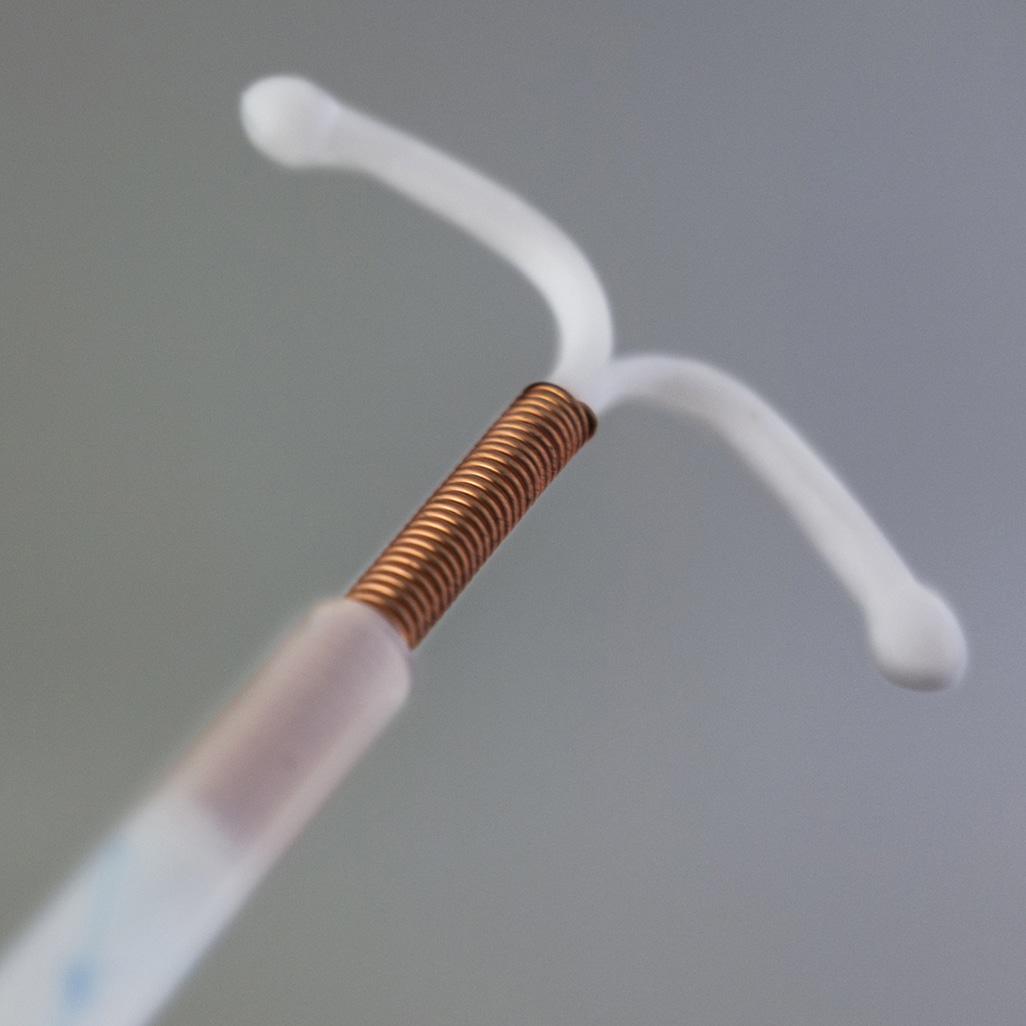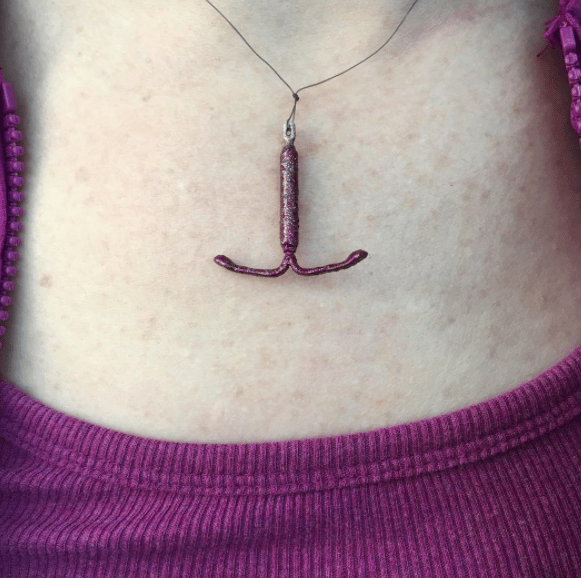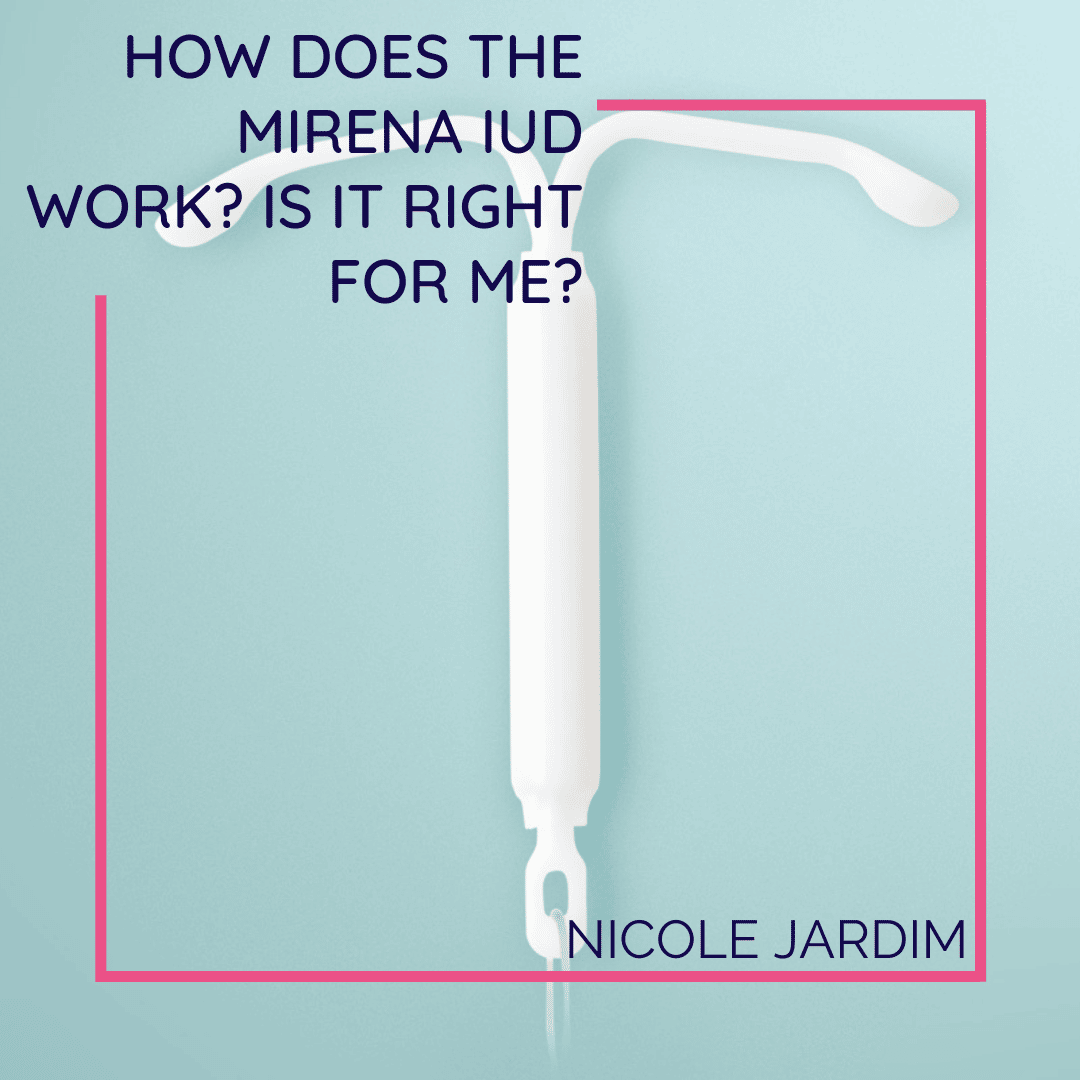Does Iud Removal Hurt
IUD removal can briefly cause discomfort or cramping during the removal procedure. IUD removal is less painful than insertion. However, there can be complications during removal, such as your doctor being unable to locate the strings. It is suggested to take over-the-counter medications such as ibuprofen or acetaminophen for a day or two after the procedure to ease any discomfort if needed.
Can My Iud Fall Out
Your doctor will check your device during your regular office visits. Your cervix should hold the IUD in place, but in rare cases, it can fall all the way or part of the way out.
This is more likely if:
- You dont have children.
- Youâre under 20 years old.
- You had the IUD put in right after having a baby or after having a second-trimester abortion.
- You have fibroids in your uterus.
- Your uterus is an unusual size or shape.
IUDs are more likely to come out during your period. You may see the device on a pad or tampon. Check periodically to make sure you can feel the strings. If they feel shorter or longer or if you can feel the IUD itself pushing against your cervix, it may have moved. If this happens, contact your doctor.
Pull The Iud Right Out
As the IUD passes out of the uterus and into the cervix, you may experience cramping.
Expect that! Dont be alarmed by it.
Instead, keep pulling the device out. Slight cramping isnt a sign that something is wrong.
Congrats! Your uterus is free! But before you junk the little bugger, though, look at it.
Like, really look at it.
Are all the parts still there? Google the brand of device you have and compare your IUD to pictures to make sure.
Its possible for a part of the IUD to snap off and remain in the body, says Huong Nghiem-Eilbeck, MD, MPH, a provider at Pandia Health and board certified OB-GYN in Los Angeles, California.
If it looks like part of it is missing, seek care immediately
Save all of the parts of the IUD that did come out in a baggie and then come in for an evaluation by a doctor, Nghiem-Eilbeck says.The missing pieces can get embedded into the uterus or travel elsewhere in the reproductive tract causing things like discomfort, scarring, or even internal bleeding.
You May Like: How To Know When My Period Will Start
When Does Each Type Of Iud Need To Be Removed
Whether youre itching to start a family, try a new form of birth control, or just wondering how long an IUD can take up residence in your uterus, knowing the remove-by date of hormonal and non-hormonal IUDs can ensure you dont wait too long to see your doctor.
The timeline for IUD removal varies based on the specific type of IUD you have and how long it works for. Heres how long hormonal IUDs are recommended for use:
- Mirena: recommended for up to five years
- Kyleena: recommended for up to five years
- Liletta: recommended for up to six years
- Skyla: recommended for up to three years
Heres how long the non-hormonal IUD is recommended for use:
- Paragard: recommended for up to 10 years
Remember, you can always get your IUD removed earlier than any of these other benchmarks if another birth control method makes more sense for you or if you want to get pregnant.
Iud Cramps: Bottom Line

Cramps are a common side effect of IUD usage, especially copper IUDs. In most cases, IUD cramps can be managed with appropriate pain medication and stop after a while. In rare cases, you may feel unusually severe cramps with an IUD, which is a sign you need to consult with your doctor.
An IUD also has a number of advantages:
- Its one of the most effective contraceptive methods available today .
- IUDs have a very good safety profile. They pose no major health risks, including cardiovascular risks and risks of venous blood clots.
- Its a long-lasting method that provides 37 or up to 12 years of protection from unplanned pregnancy.
- An IUD can be easily removed, after which you can get pregnant very soon.
- A hormonal IUD can actually help your period cramps and make your periods less heavy.
Read Also: How To Get Your Period To Start
Don’t Miss: Can You Have A Uti On Your Period
The Intrauterine Device Is One Of The Most Effective Forms Of Reversible Birth Control Available Today Here’s How Copper Iuds And Hormonal Iuds Impact Your Future Chances Of Conception
The intrauterine device is one of the most effective forms of reversible birth control available todayup to 20 times more effective than birth control pills, the patch, or the ring, according to the American College of Obstetricians and Gynecologists. But what happens when you decide that you want to get pregnant when you have an IUD? Keep reading to learn about getting pregnant after an IUD, including how this method of birth control impacts your future chances of conception.
How Will It Feel To Get My Iud Removed
Getting your IUD taken out is pretty quick and simple. A health care provider gently pulls on the string, and the IUDs arms fold up and it slips out. You may feel cramping for a minute as it comes out.
Theres a small chance that your IUD wont come out easily. If this happens, your nurse or doctor may use special instruments to remove it. Very rarely, surgery may be needed.
Don’t Miss: Long Term Care Free Look Period
Advantages And Disadvantages Of The Iud
Although an IUD is an effective method of contraception, there are some things to consider before having one fitted.
Advantages:
- It protects against pregnancy for 5 or 10 years, depending on the type.
- Once an IUD is fitted, it works straight away.
- Most people with a womb can use it.
- There are no hormonal side effects, such as acne, headaches or breast tenderness.
- It does not interrupt sex.
- It’s safe to use an IUD if you’re breastfeeding.
- It’s possible to get pregnant as soon as the IUD is removed.
- It’s not affected by other medicines.
- There’s no evidence that an IUD will affect your weight or increase the risk of cervical cancer, womb cancer or ovarian cancer.
Disadvantages:
- Your periods may become heavier, longer or more painful, though this may improve after a few months.
- It does not protect against STIs, so you may need to use condoms as well.
- If you get an infection when you have an IUD fitted, it could lead to a pelvic infection if not treated.
- Most people who stop using an IUD do so because of vaginal bleeding and pain, although these side effects are uncommon.
What About Insertion While On Your Period
Going to the gyno while on your period may sound like a nightmare , but many doctors actually prefer to insert an IUD while youre bleeding.
Though an IUD can be inserted any time, your cervix may be more open and soft while youre on your period.
It also ensures youre not preggers, which is a big one, because getting an IUD when youre pregnant can result in:
Hormonal IUDs are also immediately effective if inserted while youre on your period. Otherwise, they can take up to a week to start working.
Copper IUDs are immediately effective whenever theyre inserted, because the copper itself prevents pregnancies.
Recommended Reading: What Does It Mean When Your Late On Your Period
If You’re Under 16 Years Old
Contraception services are free and confidential, including for people under the age of 16.
If you’re under 16 and want contraception, the doctor, nurse or pharmacist will not tell your parents or carer as long as they believe you fully understand the information you’re given and the decisions you’re making.
Doctors and nurses work under strict guidelines when dealing with people under 16. They’ll encourage you to consider telling your parents, but they will not make you.
The only time a professional might want to tell someone else is if they believe you’re at risk of harm, such as abuse.
In these circumstances, the risk would need to be serious, and they’d usually discuss it with you first.
Page last reviewed: 30 March 2021 Next review due: 30 March 2024
Wash Your Hands Thoroughly
If theres anything that living through a pandemic has taught you, hopefully its how to wash your hands. Welp, time to draw on that new skill set, babes!
Wash your hands with warm water and fragrance-free soap. Keep on washing them until youve finished singing Happy Birthday. K?
Fail to wash your hands correctly and you could introduce bacteria to your bits that disrupt your pH, which could lead to:
- whether you or someone you trust will be doing the removal
Read Also: When Am I Supposed To Get My Period
If You Can Enlist Someone You Trust
Quick refresher: The IUD is a T-shaped device that gets inserted into the uterus through the cervix.
Its also as far back as youll need to reach to grab the IUD string thats attached.
If youre squeamish about reaching that far back, you may consider asking a trusted friend or partner to lend a hand.
Yes, youll need a set of hands.
But youll also probably want:
- nail clippers and a nail file to trim and smooth nails before removal
- ibuprofen to take 30 to 60 minutes beforehand to reduce pain and cramping
- a towel or blanket to sit or lie on
- a hand mirror or TBH, a phone with front-facing camera you can use to see better
If your pal or partner is the one doing the removal, youll also probably want nitrile gloves, ring forceps, or both, which can help The Remover do said removal.
When the IUD is safely out, youll probably want some downtime.
So, be sure to have some comfy clothes, blankets and pillows, and your fave book or TV show within reach. Oh, and youll probably want some additional ibuprofen, water, and snacks, and a heating pad, too.
See Your Doctor If: Your Period Comes Back

If you got to be in the Secret Club of No Period after getting your IUD, and then your period starts coming back, thats also a time to make sure your IUD is in place, Kelly-Jones said. Because, what would happen if your IUD got expelled? You would start having your period again.
A benign fibroid in the uterus, called leiomyoma, could be the cause of an expulsion, or partial expulsion.
You May Like: How To Know When Your Period Starts
What To Expect During The Removal Process
If you’ve made the decision with your healthcare provider to remove Mirena for any of the reasons above, they can do so during a routine office visit. Removing Mirena does not require surgery, but you may experience some pain, bleeding, dizziness, or have vasovagal reactions . Talk with your healthcare provider if you have other questions about the removal process.
Is It Normal To Bleed For 14 Days
A menstrual period that lasts longer than seven days is considered a long period. Your doctor may refer to a period that lasts longer than a week as menorrhagia. You may also be diagnosed with menorrhagia if you experience unusually heavy bleeding that lasts less than a week. Five percent of women have menorrhagia.
Recommended Reading: Whole Life Insurance No Medical Exam No Waiting Period
Hormonal Vs Copper Iuds: How Do They Work
Hormonal and copper intrauterine devices prevent unwanted pregnancy by altering the movement of the sperm cells. By doing this, the sperm is unable to reach an egg and fertilize it. If the sperm cannot reach an egg, pregnancy becomes impossible.
Since copper repels sperm, it is an effective method to prevent fertilization. The most popular non-hormonal IUD, Paragard, utilizes copper.
On the other hand, the hormones in Skyla, Liletta, Mirena, and Kyleena prevent unwanted pregnancy by:
- Thickening the mucus on the cervix, blocking and trapping the sperm.
- Stopping the eggs from being released from the ovaries . If there is no egg, pregnancy is unable to happen.
One of the most significant benefits of intrauterine devices is that they last for a few years. However, they are not a permanent solution for contraception. Women who decide to have children or patients who do not want to have an intrauterine device anymore can reach out to a professional for IUD removal. The good news is that the process is quick and often painless.
How To Tell If It’s Still In Place
The GP or nurse that fits your IUD will teach you how to feel for these threads and check that it’s still in place.
Check your IUD is in place a few times in the first month and then after each period, or at regular intervals.
It’s very unlikely that your IUD will come out, but if you cannot feel the threads or think it’s moved, you may not be protected against pregnancy.
See a GP or nurse straight away and use additional contraception, such as condoms, until your IUD has been checked.
If you have had sex recently, you may need to use emergency contraception.
Your partner should not be able to feel your IUD during sex. If they can, see a GP or nurse for a check-up.
You May Like: What Should You Eat On Your Period
Causes Of Late Periods After Stopping Birth Control
In general, after stopping birth control, your body may take several months to return to its normal production. And in extension, a few months for your period to return.
Aside from pregnancy, however, in some cases, there could be other reasons for your late or missed periods. These reasons may range from something as simple as lifestyle factors like exercise or stress to some disorders like thyroid imbalance.
Lets take a look at these factors that could be causing your post-IUD period problems:
Your Doctor May Schedule Your Appointment During Your Period
You may typically avoid going to a gynecologist while youre on your period, but IUD insertion is different. Your doctor may actually want you to come in while youre bleeding.
Why? Its partially about your comfort. Although an IUD can be inserted at any point in your cycle, your cervix may be softer and more open while youre on your period. That makes insertion easier for your doctor and more comfortable for you.
Being on your period also helps assure your doctor that you arent pregnant. You cant get an IUD while you are pregnant.
Having an IUD during pregnancy can cause serious risks to both you and the fetus, including:
You May Like: Can I Go To The Obgyn On My Period
What Are Some Reasons Why You Might Want To Remove An Iud
An IUD, regardless of the type you get, gives you excellent control over your reproductive future. Not only is it effective for years after insertion, but it typically requires basically zero upkeep on your part. However, despite the popularity of IUDs, some people are eager to get their IUD removed before its time. Fortunately, the IUD removal process is simple. All you need to do is make an appointment with your doctor for a quick procedure. With that in mind, here are some reasons why you might choose to remove an IUD early.
Minor pain and cramping during the first few days after IUD placement are normal. But severe pelvic pain or pain and cramping that continues for weeks or even months requires a call to your doctor to determine why youre having pain and possibly book an appointment to remove the IUD. According to the ACOG, the main reasons people have pain beyond the initial one to two days include perforation , pelvic inflammatory disease , or the IUD shifting and moving. One thing to note is that IUDs do not cause pelvic inflammatory disease, but if you have a sexually transmitted infection at the time of insertion, your risk for pelvic inflammatory disease slightly increases, according to a 2014 study published in the journal American Family Physician.1
What Happens If I Get Pregnant With An Iud

The intrauterine device is one of the most popular and reliable form of reversible birth control on themarket. Its a small T-shaped device made of either copper or hormone-embedded plasticthat is inserted through the cervix into the uterine cavity and designed to preventfertilization. There are two strings attached that a doctor, advanced practicenurse, or physician assistant can use to remove the IUD when it expires , when a patient chooses to becomepregnant, or, in rare cases, when a complication develops.
About 10 percent of women choose this type ofbirth control because the risk of pregnancy is so low less than 1 percent peryear. Many women have an IUD placed right after delivery so they go homefrom the hospital with an established birth control method.
However, no form of birth control is 100percent effective. While rare, its possible to become pregnant while using anIUD. Such was the case for a patient I saw in the spring of 2018. She had anIUD, and when she took a home pregnancy test, it was positive. The patient camein for an ultrasound, and the reason for the IUD failure was obvious the IUDwas sitting in the cervix, not higher up in the uterus where it could have beenthree times as effective at preventing pregnancy.
In the rare event that pregnancy occurs whenan IUD is in place, there are risks to the patient and the pregnancy. Womenneed to seek care from an Ob/Gyn to reduce the risk of serious complications.
Don’t Miss: Can You Get A Yeast Infection On Your Period
